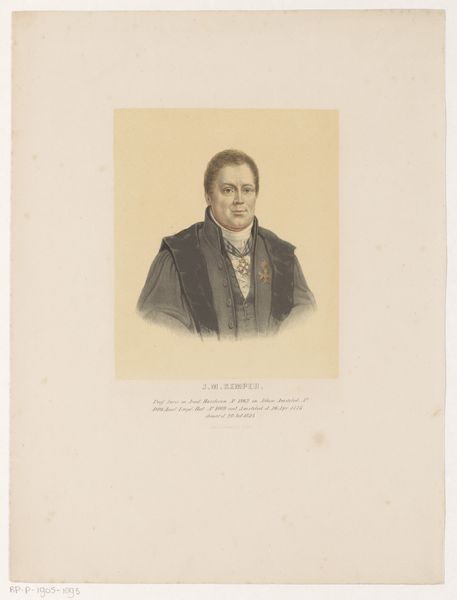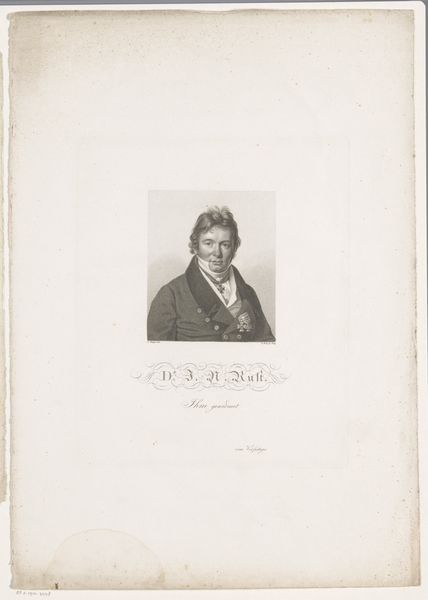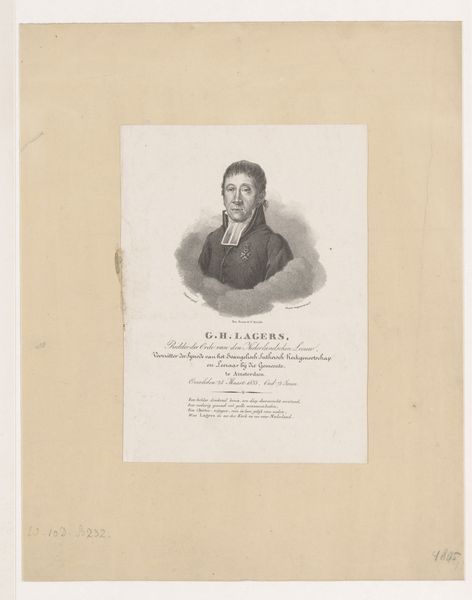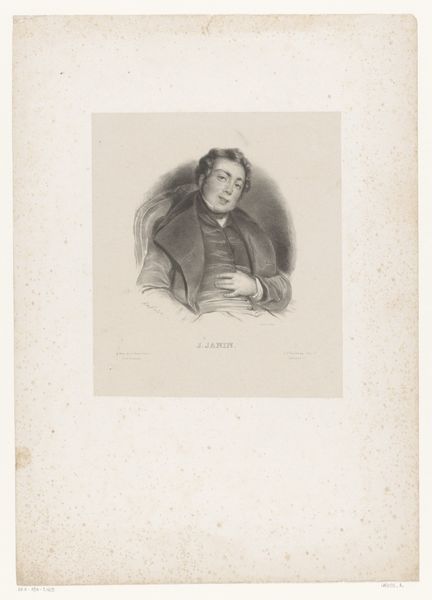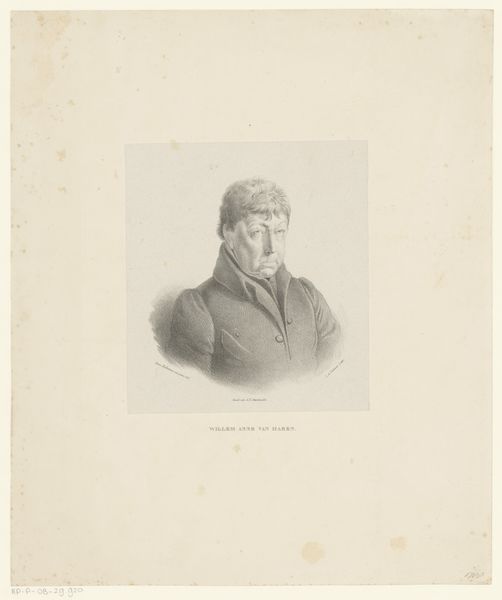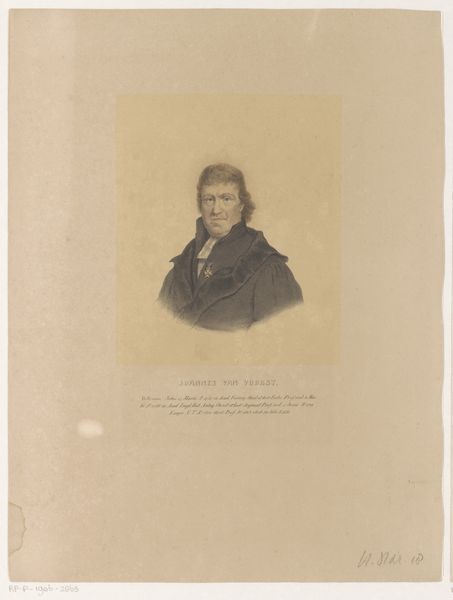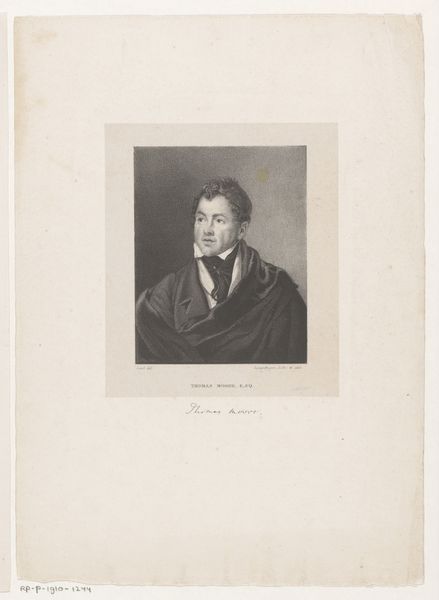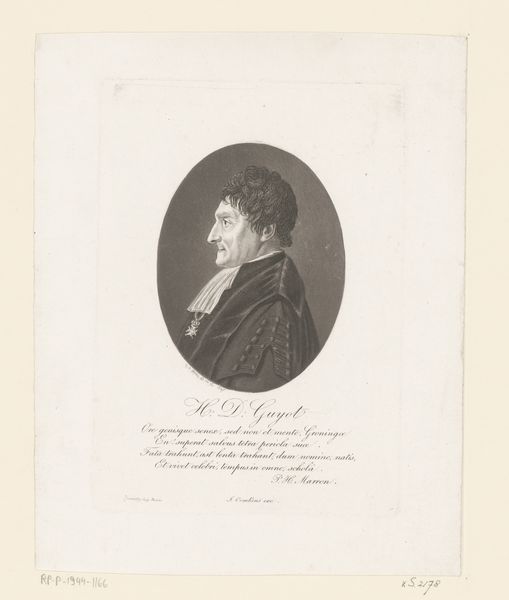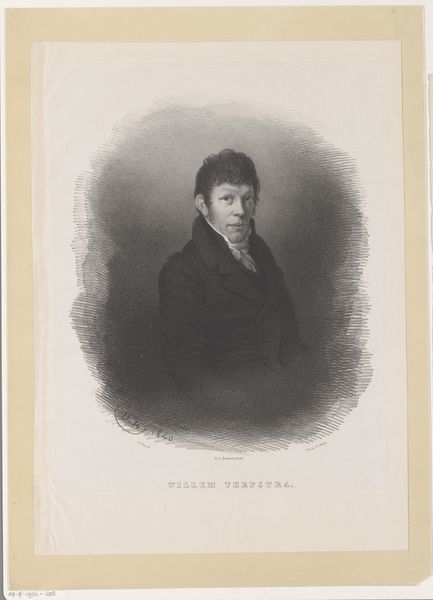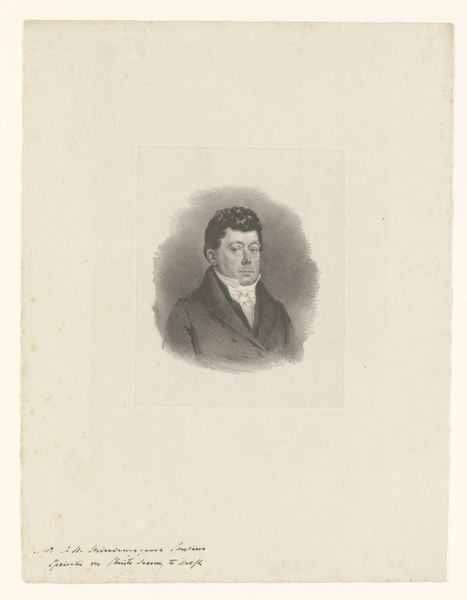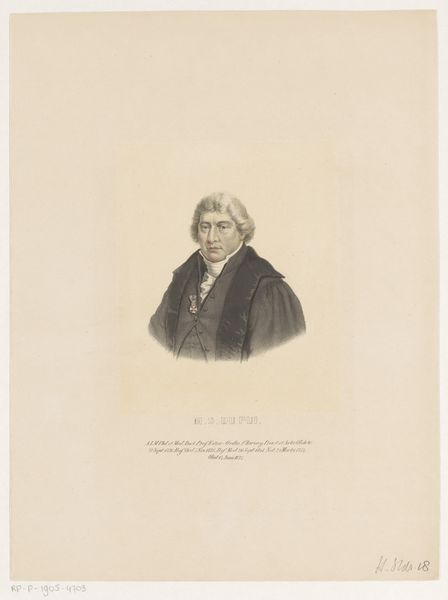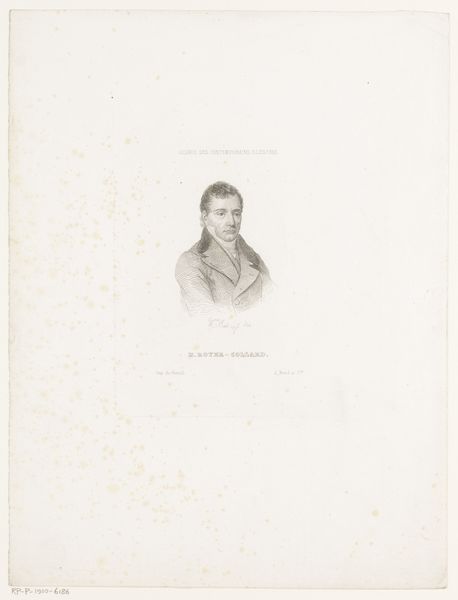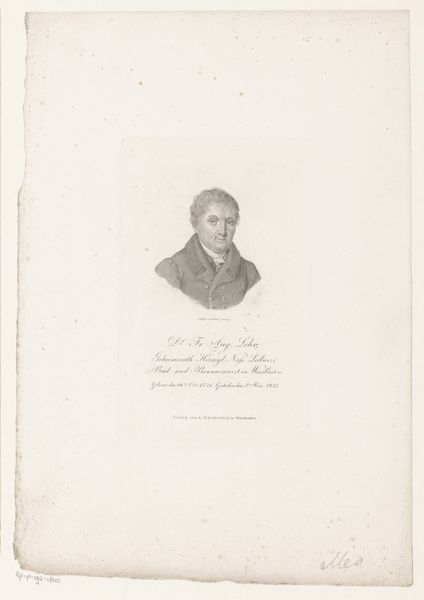
#
pencil drawn
#
photo of handprinted image
#
aged paper
#
toned paper
#
light pencil work
#
photo restoration
#
pencil sketch
#
light coloured
#
watercolour illustration
#
watercolor
Dimensions: height 360 mm, width 272 mm
Copyright: Rijks Museum: Open Domain
Curator: This is a portrait of Sebald Justinus Brugmans, created around 1850 by Leendert Springer. Look at the texture of the aged paper. Editor: Ah, yes! My first thought is that there's something haunting about this. It feels fragile and delicate, almost like peering into the past. A wisp of forgotten thoughts rendered with watercolour, isn't it lovely? Curator: Indeed. This watercolor illustration situates Brugmans within the academic and scientific spheres of his time, signaling his importance within the social and intellectual hierarchies of the Netherlands. How might that contextual history affect our understanding of portraits such as this? Editor: Well, knowing that, it adds another layer. Seeing the awards and badges of status tells us of position. However, if you remove the text inscription and think just for a moment – does he look like a great intellectual? The details like that splash of almost water stain and paper fading humanizes this man in an accessible form, what do you think? Curator: The damage almost challenges the established, revered view of intellectual status through which we often perceive historical figures, right? It reminds us that historical figures weren't untouchable. Editor: Absolutely. Also, notice that it’s only watercolor. I am immediately more invested. It reminds me that we're seeing an interpretation and an artist's individual reaction to this particular figure, as much as a 'record' of what he was actually like. A perfect little visual dance between truth, memory, and feeling, that’s delicious, is it not? Curator: Precisely! The image serves both as a personal interpretation and as a symbolic representation of authority within a certain time. Looking closer allows to read these visual signs within broader societal meanings linked to class, intellectual achievements, and masculinity. Editor: I love that insight. A lovely final observation as well! Thanks! Curator: My pleasure.
Comments
No comments
Be the first to comment and join the conversation on the ultimate creative platform.
